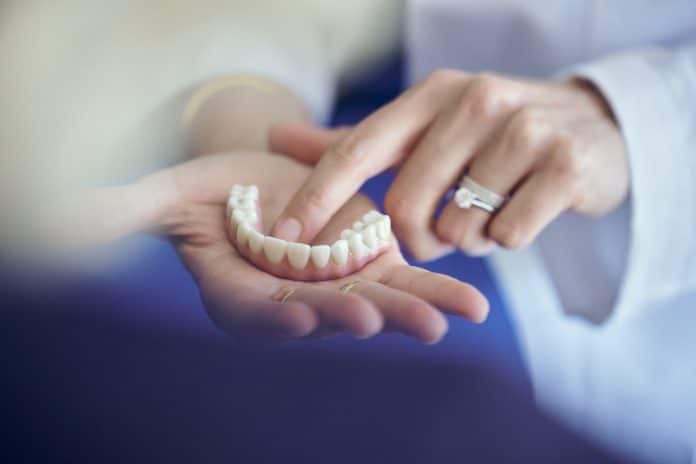Did you know that 1 in 6 adults aged 65 or older have lost all their teeth? That’s a staggering 17% of older adults. To add to this concern, studies show that tooth loss can have serious health consequences, with links to conditions such as heart disease, diabetes and even Alzheimer’s.
For anyone facing tooth loss, dental implants offer more than just a cosmetic solution – they can have a significant impact on your overall health and wellbeing. Dental implants can help to improve psychosocial issues as well as nutritional deficiencies that are often associated with tooth loss. However, not all dental implant procedures are performed the same. Specifically, the practice of “24-hour teeth” often gains attention, but the details of this method can make all the difference in achieving successful, long-lasting results.
The different types of 24-hour teeth
In the dental implant industry, “24-hour teeth” refers to the ability to receive new teeth within 24 hours – but the distinction in how and when this is performed is crucial.
In one approach, patients receive a set of functional healing teeth within 24 hours. This means, the patient undergoes surgery for the implant placement and then receives a set of teeth that are permanently anchored to the implants, look and function like normal teeth, but are not considered the final set.
The alternative—and riskier—approach involves placing the final, permanent teeth after the implant placement, instead of healing teeth. While this option might sound appealing, especially for someone who is eager to have new, permanent teeth, it can come with significant trade-offs.
The trade-offs
The purpose of the first approach is to allow your dental implants to heal – this process is called osseointegration, which is where the implant fuses with the jawbone and can take several months. In addition to osseointegration, the soft tissue surrounding the implants swells, settles, and changes throughout the healing process, affecting how the teeth fit into the implants and mouth. Ensuring proper fit throughout the healing process is critical as food can get trapped between the prosthesis and the soft issue, which can lead to complications including peri implant disease. Additionally, air escape between the prosthesis and the soft tissue can impact speech and articulation. This highlights the importance of healing teeth for both cosmetic appearance and function.
It’s also worth noting that patients who receive permanent teeth at the time of surgery have limited options for further customization. As we know, no two smiles are the same, and your new teeth should be tailored to fit your needs in terms of fit, size, color, shape and comfort. The healing time allows for the prosthodontist to customize your permanent teeth throughout the healing process – which can typically take up to four months.
Tips before your procedure
So, how can you ensure a more seamless dental implant procedure? Here are some actionable tips on 24-hour teeth done the right way:
- Set up a consultation and ask the right questions. These questions should include: Are dental implants the right option for me? What is the process, timeline, and recovery time for the procedure?
- Ensure you are meeting with the most qualified dental professional. Dental implants should be performed by specialists who have obtained the necessary training and licensure in this field. Particularly when it comes to fixed full arch restorations, experience matters and ADA recognized dental specialists like prosthodontists and oral surgeons have been trained to manage the complexities. In your consultation, questions to ask include: what are the qualifications of the doctor who will be performing this surgery? How many dental implant procedures have they conducted?
- Be on the lookout for any red flags in your consultation. Some of these red flags may include receiving final teeth within 24-48 hours, going through your consultation without ever meeting the doctor, and an inability to refine your new smile during the healing process.
- Understand the best financial plan for you. While dental implants are an investment, they might be more accessible than you think. Look for providers who offer a variety of third-party financing options to help find a payment plan that works within your budget.
- Choose long-term outcomes over short-term convenience. While fewer appointments may sound ideal, the follow-up process after surgery is worth your time. Look for providers who offer multiple checkpoints throughout the healing process, who utilize research-backed methods that are tailored to your healing journey, and who stand behind their work in the event of any complications down the road.
Our smile isn’t just about appearance, it’s key to both our physical and mental well-being. When considering dental implants, taking the right steps ensures long-term success, confidence and health.
ClearChoice Dental Implant Center doctors follow a patient-centered, step-by-step process to ensure patients are healing properly and satisfied with their end results. To learn more or set up a free consultation, visit https://www.clearchoice.com/.
























